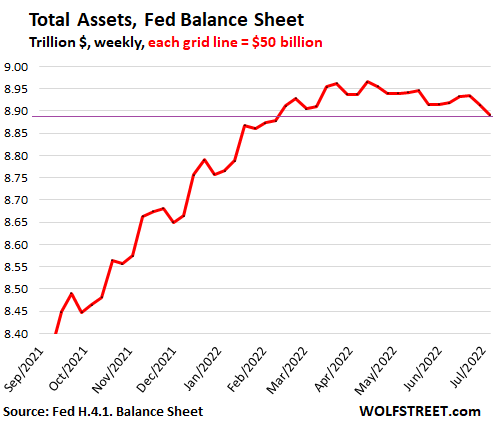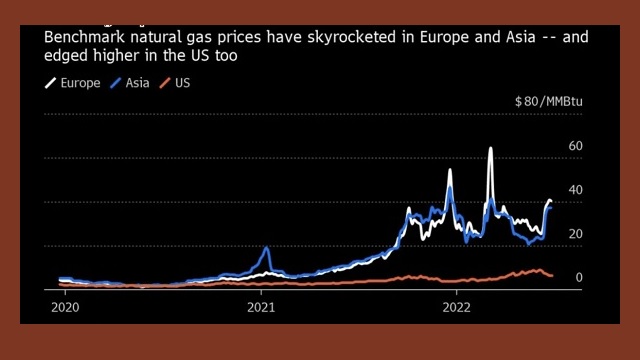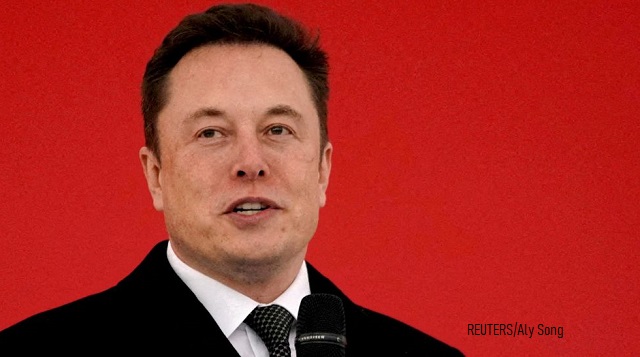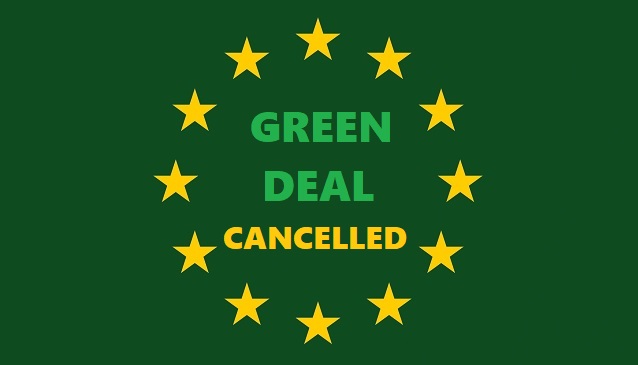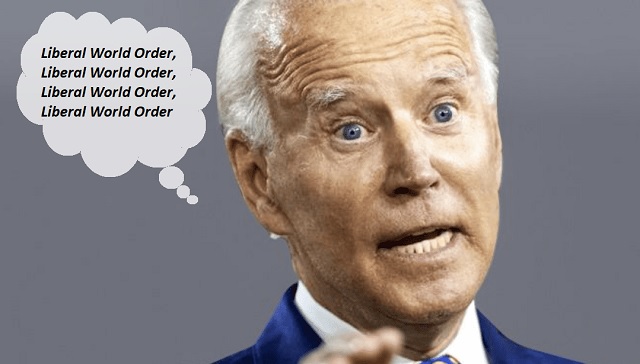With a recession looming over the average American, the group to blame is pretty obvious, this group being the central bankers at the Federal Reserve, who inflate the supply of currency in the system, that currency being the dollar. This is what inflation is, the expansion of the money supply either through the printing press or adding zeros to a computer screen. It has gotten so bad that in the last twenty-two months, 80 percent of all US dollars in existence have been printed, from $4 trillion in January 2020, to $20 trillion in October 2021.
This is always how recessions start: the expansion of easy money, the creation of bubbles, and heightened prices caused by the devaluation of the currency supply. But recessions occurred long before the Fed’s establishment in 1913.
Were these market failures, as many are taught to believe, or were they still the fault of a central bank or government policy? How bad were pre-Fed recessions? Did they rival the Great Depression or 2008?
The Continental Dollar
During the days of the American Revolution, the Continental Congress convened to figure out how to finance the Revolution. In June 1775, Congress issued six million paper currency notes known as continental dollars in order to pay for the new army and the supplies needed to fight a war. Those who supported the Revolution would jump in line to support this new fiat currency, as it was the patriotic thing to do.
By 1780, the number of continentals in circulation had reached 241 million, and the continental had done its damage. The patriots who bought into the fiat dollar suffered the most, while people like David Hall, who by order of Congress was permitted to print out fiat bills, and the Loyalists, who kept their gold and silver specie were able to stay financially afloat.
The continental was turned back en masse, as it now held no value. Those who trusted the continental over gold were left with nothing. Certain Founding Fathers, after witnessing people’s livelihoods ruined by fiat paper money, decided to make provisions to make sure this mistake would not happen again.
Article 1 Section 10 of the US Constitution states:
No state shall make any thing but gold and silver coin a Tender in Payment of Debts.
This section would be violated throughout US history, from the Civil War to 1933, when President Franklin Roosevelt confiscated US citizens’ gold and prevented them from exchanging the dollar into gold.
It’s clear what caused the failure of the continental: Congress and printing presses. This, however, would not be the last economic problem that would face America, the next major downturn came in 1819.
The Recession of 1819
After the War of 1812, state-chartered banks and the Second Bank of the United States (SBUS), which was established in 1816, expanded the money supply. Murray Rothbard’s book The Panic of 1819 notes how these state banks expanded the amount of banknotes from $46 million to $68 million in 1815. The problem was that banks printed more paper notes than there was gold specie to back them.
In fact, from 1817 to 1818, the SBUS expanded credit by 57 percent, outdoing the credit expansion in 1815–17, when it expanded credit by 25 percent. This credit expansion caused prices to rise in certain areas of the economy, such as agriculture and shipbuilding. All of these markets received the biggest loans that were granted by SBUS branches and state banks.
Eighteen eighteen spelled trouble for both the state banks and the SBUS: the money supply fell by 10 percent and there was a credit contraction of 41 percent. Foreigners and other citizens started to trade in their banknotes for specie, and many state banks refused to convert paper to gold as their gold reserves ran dry, as did the SBUS reserves.
Thomas Jefferson, who warned against central banking, gave his thoughts in a letter to John Taylor in 1816. Jefferson states:
And I sincerely believe with you, that banking establishments are more dangerous than standing armies; & that the principle of spending money to be paid by posterity, under the name of funding, is but swindling futurity on a large scale.
His suspicion was confirmed when in 1819 a recession ignited by the inflationary policy and agriculture and turnpike workers’ wages fell 60–80 percent.
Despite this bank failure, markets were allowed to handle the recession, or the readjustment period. Because of this, the economy bounced back quite quickly. At the start of the recession, gross domestic product per capita only fell 1.1 percent, but from the latter half of 1819 until 1824, GDP per capita grew 1.5 percent. This was before urbanization, so many still lived on farms. Even though wages fell, the recession was still nowhere as bad post-Fed recessions like the one in 1929.
The Smoot-Hawley Tariff Act of 1930 put a 55 percent tax on all foreign imports, this practically eliminated all exports. Agriculture suffered the most. Tens of thousands of farms were closed and sold for as low as $50. At the beginning of 1920, there were 28,885 banks, and by 1933, roughly fifteen thousand remained, the Federal Reserve Board of 1937 noted that two-thirds of these banks were in towns with less than twenty-five hundred people and that the majority failed.
Wages may have dropped in 1819, but the economy bounced back. It did not drag for sixteen years, nor did thousands of farms and banks fail.
Isn’t Gold Supposed to Prevent This?
Another reason why recessions during the “gold standard” days happened is that nations rejected using the simple units of measurements for weighing gold and inflated paper notes using small amounts of gold. For example, one pound of gold is sixteen ounces, sixteen ounces is 453 grams, etc.
Each nation had its own sovereign money, such as the dollar, the mark, and the franc, and while each was tied to gold, each had different exchange rates for gold. This allowed nations to go off the gold standard and inflate the currency supply.
In his book What has the Government Done to our Money? (p. 14), Murray Rothbard states:
The dollar was defined as 1/20 of an ounce of gold. It was therefore misleading to talk about exchange rates of one country to another. The pound sterling did not really exchange for five dollars. The dollar was defined as 1/20 of a gold ounce and the pound sterling was, at that time, defined as the name for 1/4 of a gold ounce, simply traded for 5/20 of a gold ounce.
Rothbard later explains how in a pure free market, gold would be exchanged directly, in grams, grains, or ounces.
Panic of 1873
Just before the American Civil War, there was around $200 million in banknotes issued by fifteen hundred state banks. In 1861 after the outbreak of the war, there was much debate on how to finance it. All options were on the table, and it seems President Abraham Lincoln chose them all.
In 1861, the Revenue Act imposed a 3 percent tax rate on incomes between $600 and $5,000. Greenbacks were introduced, and these were not backed by gold but printed on paper. Secretary of the US Treasury Salmon Chase asked Congress to approve the printing of 150 million notes, and in 1862, he got the order to do it.
Secretary Chase got two similar orders in 1863 and 1864, both equating to $150 million. By 1865, there were $835 million in both national and state banknotes, but the banks did not stop until 1873, when there was around $1.964 billion in circulation.
One of the founders of the bond system was Jay Cooke. The House of Cooke distributed Treasury bonds during and after the Civil War. Cooke also became head of the government-subsidized Northern Pacific Railroad. Cooke was fervently antigold and considered it a hard coin of a “bygone age.” The previous inflationary policies of the banks caused the House of Cooke bond system and the Northern Pacific railroad to fail, which sparked the Panic of 1873.
But even though a government-subsidized company crumbled under its own weight, the country did not fall into a long depression. In fact, the years from 1873 onward would be a very prosperous time, Rothbard notes:
The decade from 1869 to 1879 saw a 3-percent per-annum increase in money national product, an outstanding real national product growth of 6.8 percent per year in this period, and a phenomenal rise of 4.5 percent per year in real product per capita.
This was not a depression. In fact, most recessions or panics up until 1921 were over quickly because neither the government nor a central bank got involved. But in cases like the Great Recession of 2008, the Fed and government got involved.
The housing boom and bust of 2006 began because the Fed kept interest rates lower than they should have been. This contributed to the demand for housing, since lower interest rates mean lower mortgage payments. Eventually, the Fed kicked interest rates back up, which caused those who had bought houses they normally wouldn’t be able to afford to pay higher mortgages.
All the financial institutions that financed the housing boom, like Fannie Mae and Freddie Mac, took massive losses and had to be bailed out by the US government. In the end, six million people had their homes foreclosed on, unemployment reached 10 percent, and GDP fell by 4.3 percent.
Panic of 1893
While previous examples showed the expansion of paper money outpacing the amount of specie American banks had in store, the Panic of 1893 was sparked by an expansion of silver and silver paper certificates. Hans Sennholz writes that “from 1878 on to 1893 there had been an expansion of money based on silver.”
This recession was not a matter of printing notes beyond the amount of gold banks had, but instead one of congressional meddling. In 1878, the Bland-Allison Act allowed for the Treasury to mint silver coins and issue silver certificates. In 1890, the Sherman Silver Purchase Act decreed that the government would buy 4.5 million ounces of silver every month. This expansion of silver caused the gold supply to drop because of heightened prices and the easy money legislation.
Eventually, President Grover Cleveland called a special session in Congress, pleading for the repeal of the previous silver acts to stop the drain on US gold reserves. They were repealed, which stopped the inflation of silver and allowed for a recession to readjust the market.
*****
This article was published by the Ludwig von Mises Institute and is reproduced with permission.
TAKE ACTION
Are you concerned about election integrity? What informed United States citizen isn’t? Did the 2020 national election raise many questions about election integrity? Are you concerned about the current cycle of primaries and then the general election in November? No doubt the answer for The Prickly Pear readers is YES.
Click below for a message from Tony Sanchez, the RNC Arizona Election Integrity Director to sign up for the opportunity to become an official Poll Observer for the 8/2 AZ Primary and the 11/8 General Election in your county of residence. We need many, many good citizens to do this – get involved now and help make the difference for clean and honest elections.


